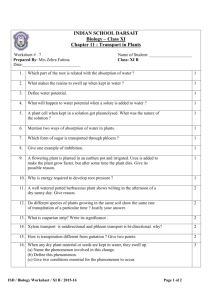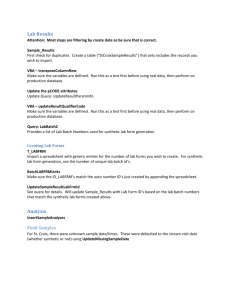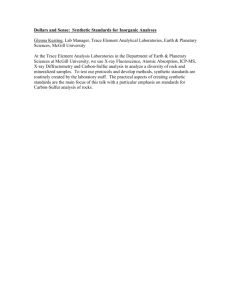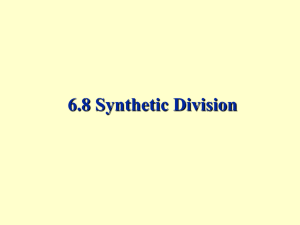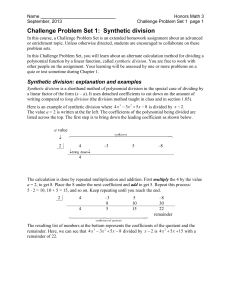Negative-Pressure-and-transpiration-an
advertisement
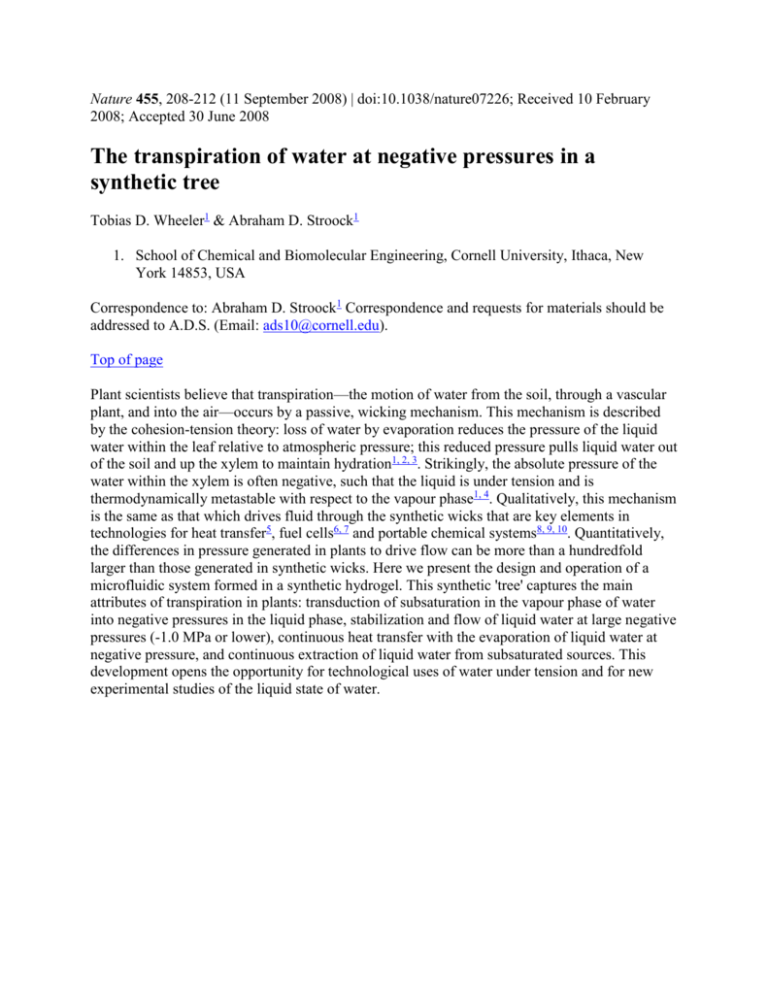
Nature 455, 208-212 (11 September 2008) | doi:10.1038/nature07226; Received 10 February 2008; Accepted 30 June 2008 The transpiration of water at negative pressures in a synthetic tree Tobias D. Wheeler1 & Abraham D. Stroock1 1. School of Chemical and Biomolecular Engineering, Cornell University, Ithaca, New York 14853, USA Correspondence to: Abraham D. Stroock1 Correspondence and requests for materials should be addressed to A.D.S. (Email: ads10@cornell.edu). Top of page Plant scientists believe that transpiration—the motion of water from the soil, through a vascular plant, and into the air—occurs by a passive, wicking mechanism. This mechanism is described by the cohesion-tension theory: loss of water by evaporation reduces the pressure of the liquid water within the leaf relative to atmospheric pressure; this reduced pressure pulls liquid water out of the soil and up the xylem to maintain hydration1, 2, 3. Strikingly, the absolute pressure of the water within the xylem is often negative, such that the liquid is under tension and is thermodynamically metastable with respect to the vapour phase1, 4. Qualitatively, this mechanism is the same as that which drives fluid through the synthetic wicks that are key elements in technologies for heat transfer5, fuel cells6, 7 and portable chemical systems8, 9, 10. Quantitatively, the differences in pressure generated in plants to drive flow can be more than a hundredfold larger than those generated in synthetic wicks. Here we present the design and operation of a microfluidic system formed in a synthetic hydrogel. This synthetic 'tree' captures the main attributes of transpiration in plants: transduction of subsaturation in the vapour phase of water into negative pressures in the liquid phase, stabilization and flow of liquid water at large negative pressures (-1.0 MPa or lower), continuous heat transfer with the evaporation of liquid water at negative pressure, and continuous extraction of liquid water from subsaturated sources. This development opens the opportunity for technological uses of water under tension and for new experimental studies of the liquid state of water.
